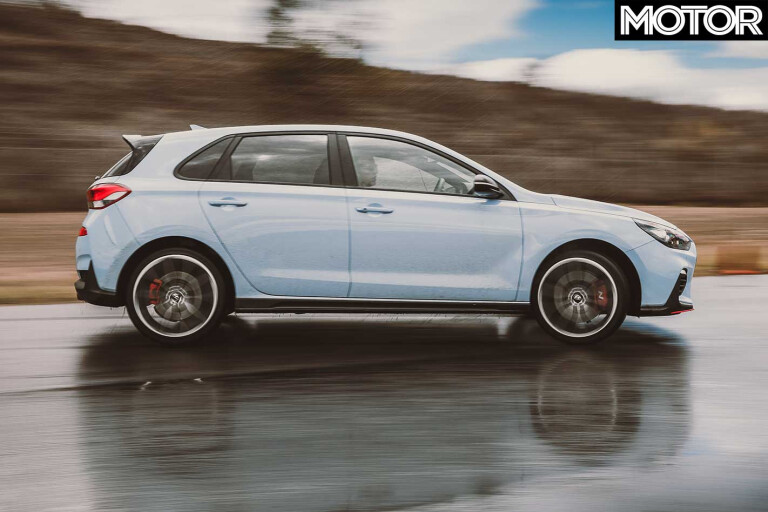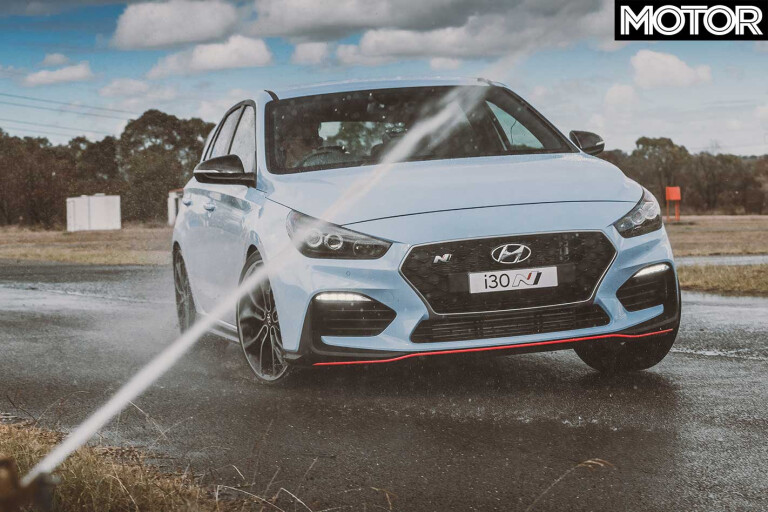.jpg)
What do you think is the most brutal thing Luffy’s body endures every year?
Is it the countless laps at Bathurst in cars that would make a GT-R Nismo whimper? Dragging door mirrors along the ground while stunt driving at Movie World? Nope. On his calendar, today is the most unforgiving. “It’s the lack of bolstering,” he says, in a road car that completes 70 slalom runs, 84 emergency stops, and 14 motorkhanas that take its toll.

Based on this, it would be cruel to add lateral G tests to his roster. However, it’s crucial to know which tyre will turn on a soggy surface. So we’ve set up a right angle corner to be taken at 45km/h in both directions three times. We’ll toss the best and worst lateral G figure, average the remaining four, and rank the tyres accordingly.
The Dunlop starts off strong with some stratospheric peaks around the 1.08G mark, but its average is quickly sunk by a couple sub-1G figures. To make matters worse, the Continental SportContact 6 wastes no time in establishing its dominance. It consistently registers lateral acceleration above 1G. Amazingly, this equals an average higher than the peak G any tyre could manage during the dry motorkhana.

Goodyear’s Eagle F1 produces nothing remarkable, however, the Falken FK510 paddles through the water like it has webbed feet. It spikes at 1.08G and drops to less than 1G in only one considered run.
Interestingly, our middle-order tyres can’t swim anywhere near as well. The Laufenn fails to pip 1G on the Driftbox, while the Invo’s considered runs range between 0.9G and 1G. They’re bettered by the Nexen, which hovers around the 1G mark more consistently.
Like our wet braking test, a warming surface starts to affect the control tyre performance. Its peak G climbs slowly, as does its average, which may be why the HiFly registers a 1.04G spike in the afternoon.

The Pirelli, which follows the HiFly, makes the most of the warmth, producing more than 1G on every run like the Continental. A few sub-1G turns from the Kumho, though, suggest the Pirelli’s own merits rather than a warmer surface are responsible for its performance. Meanwhile, the Achilles can’t capitalise on the day’s best conditions and again turns in a lowly result.
That said, once we zap the data with linear regression the adjusted results downgrade the Kumho’s and Pirelli’s average lateral G and lift the Dunlop’s. The Continental and Falken are also boosted by the advantage of running early, but they secured their top places with or without it.

COMMENTS